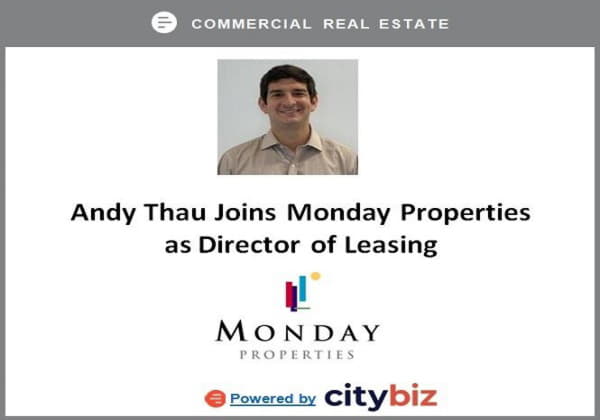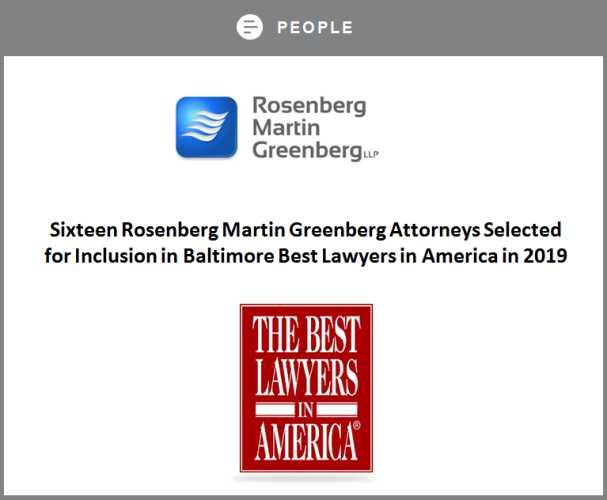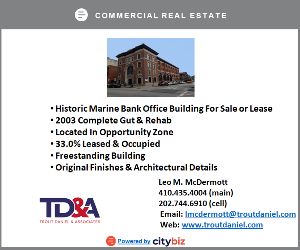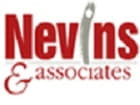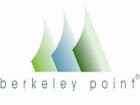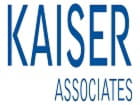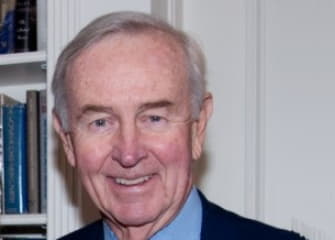
Joseph R. Hardiman
Click here for Part I, Part II & Part IV
Joe Hardiman's quiet, powerful and positive influence in Baltimore is unknown to most Baltimoreans. The impact of his contributions are understood among the informal leaders in town. He was instrumental in the growth of Alex. Brown & Sons, where he served as Administrative Partner. He was effectively the chief operating officer of the firm during the period of its transition from a regional to a national investment banking firm.
He served with distinction on the Board of Visitors and Trustees of several of the University of Maryland Schools and Foundations. An alumnus of both the College and the Law institution, Hardiman served the school throughout his career.

Hardiman was a close confidant of Sally Michel, herself a close confidant of first Mayor and then Governor William Donald Schaefer. As a result, Hardiman had an insider's knowledge indirect influence on many of the progressive initiatives undertaken by the Mayor and then the Governor.
As an example, Hardiman was a founder of the Baltimore Chesapeake Outward Bound School. This was the first Outward Bound School created to serve inner city youth. Now in its fourth decade, the school has taught over 80,000 students. This year alone, the school expects to serve just under 6,000 students. It is an important tool for the Baltimore City Police Department's outreach to citizens. Police officers join Baltimore City School students on the school's rope courses and climbing walls. It is confidence-building, fun and trust-building.
Hardiman served the nation as well. He was the chief executive officer of the National Association of Securities Dealers, the nation's self-regulatory body for the financial markets. As head of NASD, he operated the NASDAQ Stock Market, a fundamental driver of the nation's economy. The NASDAQ is the envy of the world for job creation and Hardiman lead it for a decade.
This interview is designed to tell the citizens of Baltimore more about a mover and shaker who has influenced the city and the nation effectively for most of his adult life.
ALFRED BERKELEY: I know that citybizlist has done another video on Outward Bound, but I would like just to get a little bit in this discussion about what Outward Bound is doing now with the police force and the inner-city students, because I think it is so powerful.
JOE HARDIMAN: Our concept with Outward Bound originally had been to focus on inner-city youth, youth who may not be able to have that experience. We were the first urban-based Outward Bound center in the world. There are now half a dozen others here around the United States, but we were the very first and we were the very first to focus on inner-city kids—to provide them with outdoor experience. It has always been our focus and continues to be our focus today. We ran other programs for kids that had the means to go on these programs, many times intermingling the two, which was a great experience for both. We ran corporate programs to help corporations develop bonding among their leaders and we also developed programs with whole schools that wanted to have classes exposed to an outdoor experience, to bring the classes closer together.
We have been conducting those for a number of years, but a few years ago, we saw an opportunity to try to build a trust between the inner-city kids that were going through the Outward Bound program and the Baltimore City Police Department, because there was a high degree of mistrust, and the Freddie Gray incident really exacerbated that. Under the leadership of the board and our now-executive director Ginger Mihalik, we started this program where we bring kids from the inner-city schools generally and we put them together with cadets from the police department training program and try to get them to see that these are not bad guys: not all policeman are bad guys, not all inner city kids are bad guys or gals, you know. They learned to develop a sense of trust. And then Freddie Gray occurred and the police department working with Ginger and the staff and the board decided to expand this to include all of Baltimore city policemen. We are running that program now and everybody who is a member of Baltimore City Police Department either has or will have to go through this program.
It started at the very top, where the chief and all of his senior leadership went through that program paired up with seventh grader, eighth grader, ninth grader—usually junior high school rather than older or younger kids—and they spend a day together going through the ropes course, going through all kinds of games where they had to rely on each other and they had to trust each other, and it has been I think very successful.
Joe, you mentioned Sally Michel. There are other powerful leaders in town as well—who, in your mind, were some of the great contributors?
We have to start with Bob Embry. I think Bob has been the most significant private driving force behind a lot of what has happened in the last 30 years.
I happen to agree with that.
And you cannot overlook Mark Joseph. Mark has been right there at his side supporting most of the endeavors that Bob has either initiated or certainly has supported through his leadership at the Abell Foundation. You have some of the other ladies here in town in addition to Sally Michel—there was Lainy LeBow who worked with William Donald Schaefer. She was on his staff where Sally was a volunteer. The two of them worked hand-in-hand driving a lot of the change for good that has happened in Baltimore over the years. Those are some of the private sector individuals.
Behind the scenes there have been funders that you do not hear as much about, but without their financial support, a lot of these endeavors would not have occurred. I am thinking of people who come to mind like Sue Cohen Truman Semans and Bob Meyerhoff and people of that generation. These are people of my generation. Younger leadership has certainly come along, and you have to take a look at some of the people from T. Rowe Price, for instance, who have been very instrumental in leading change. George Roche would be one. George, when he was the CEO there, was very active in the community; Brian Rogers, the most recently departed CEO, but still active there; Chip Mason would be another—he was more of my generation; and Buzzy Krongard when he was at Alex Brown. You have to give these people some real credit for standing up and becoming leaders in bringing Baltimore into the 21 st century.
When you left Alex Brown, you went down to the NASD—the National Association of Securities Dealers. It has a unique position legally and operationally in the financial services industry. How did you go there and what is NASD all about?
As we discussed earlier, I am a lawyer by training. I practiced law for four years and then I got into the securities industry, fortunately because it is a business that I love, and never looked back at the practice of law. Among my responsibilities both at Robert Garrett and Alex Brown was overseeing the legal and compliance aspects of the business. The securities industry was unique in that, back in the late 1930s, it looked at what was happening in the world—and the Securities and Exchange Commission was still then relatively new, having been created in 1933, and the Exchange Act was 1934—but they were still in the early stages of developing rules and regulations to guide the future of the securities industry. The industry looked at itself and said, “Perhaps we’ve got to be doing that ourselves,” and so I think they were the first industry in America to really embrace the concept of self-regulation.
In 1937 and 1938 the industry established a commission of which the chair was Benjamin Howell Griswold II, who was then the senior partner with Alex Brown & Sons, and they drafted legislation which was adopted by Congress in 1938 to create the National Association of Securities Dealers as a self-regulatory body in order to oversee the conduct of business in the securities industry. It was based upon the concept of just and equitable practices in the industry, and fair dealing with your customers and your peers in the industry.
And so, NASD came into being in 1938. Mr. Griswold served on the board but I don’t think he was ever the chair—I am not sure of that—and the concept of self-regulation grew and thrived. The SEC was happy to have that because they had limited funding from Congress, and so this was an entity—theNASD, which is the acronym for the National Association of Securities Dealers, and which also by the way stands for the first four letters in NASDAQ, which is where the name came from—and so the NASD was funded by the industry, not by Congress, not by the SEC. That grew, it was successful, and the whole concept of self-regulation caught on. Other industries embraced it, but we were kind of the role model.
Over the years there were basically, before I got there, five CEOs at the NASD, and I was happily working with Alex Brown when it went public—not necessarily a decision that I agreed with but it did and for good reasons—and so at that time both of my daughters were in college and I was then acting as the board chairman of the NASD. I got involved as a volunteer from the industry and worked myself up.
Hearing self-regulatory cases?
Hearing self-regulatory cases—cases that were being brought by customers against the member firms, or a particular broker. That’s how you got involved. You started sitting in and hearing those cases and my legal experience helped. We always had a public representative on those committees in addition to representatives from the industry. I did that and I was elected by my peers from the mid Atlantic region to serve as the chairman of the district, which elevated me to the National Board. And in my last year there I was elected chairman of the National Board. That was in 1986, 87. We had had one former chairman for 17 years—Gordon Macklin—who actually was the father of the NASDAQ stock market, and we will talk about that.
A remarkable man.
Absolutely a remarkable man. Gordon had been there for 17 years. I always call him a locust because he left after 17 years to become chairman of Hambrecht & Quist, which was one of Alex Brown’s largest and best competitors. As chairman, I created a search committee of people from the industry and they conducted a thorough and complete search, came to me and said, “How about you? Would you be interested?”
Well, they called me at a good time. A lot of change was taking place at Alex Brown. Our kids were out. I had this yearning for public service, and this was certainly a quasi-public service. The whole combination of factors led me to accept the job as the fifth CEO of the National Association of Securities Dealers, which also at the time owned the NASDAQ stock market. That’s how I got there.
And when you’re there in that job at NASD, you’ve got a regulatory hat and you’ve got a market function hat?
Correct.
And those are two distinctly different businesses?
Well, at the time, we did not think so, but as the market operations grew into a real business, yes, it did. I mean, when I first got there, NASDAQ was basically a quotation system.
It was before the trade system—information before the trade.
That’s right. If you go back to the history of the over-the-counter markets, they have existed in the United States going all the way back to the time that there were securities markets. Then, they were, as the name implies, over the counter. If you had to do a transaction, if you wanted to buy stock in a company that was in Chicago and you were in Baltimore, you had to call a securities dealer in Chicago and get quotations on what you could buy that stock for or sell it for. They were verbal, and you had to relay them back to your local dealer in Baltimore who then went to the customer and said, “We think we can buy this at 20,” or “we could sell it at 19,” so the spreads were pretty big at that stage of the day. By the time you got back to the dealer in Chicago, the price may have changed.
The over-the-counter markets existed throughout the United States. Every significant city had its own local over-the-counter market. The New York Stock Exchange existed in New York and it was a central trading floor where people came together and did basically the same thing that an over-the-counter market was doing over the telephone throughout the country, but they were doing it in a central location and really focused upon maybe the largest 1,000 companies in America.
At one time, there were probably 5,000 smaller companies where you could buy or sell their securities in these local markets. The number of companies in the over-the-counter markets dwarfed the New York Stock Exchange, but the New York Stock Exchange was the market place for the very large companies in America and they were largely industrial companies. In the 1960s, the Securities and Exchange Commission authorized a study of the over-the-counter markets in the United States and submitted a report to the NASD saying, “We really needed to bring some degree of centralization to these very fragmented markets—and it can be done, we believe, through automation.” The NASD Board at that time was under the leadership of Stretch Gardner,, who was the CEO of Reynolds Securities at the time, which became Dean Witter Reynolds and is now part of Morgan Stanley. They embarked upon an effort to do that and they contracted with a technology company—a very prominent one at the time, Bunker Ramo, a public company—to build this network of terminals that were connected by a national communications system. They were really not computers at the time as you and I know.
Terminals.
Terminals, but they built a network that tied them all together. That was the beginning of the NASDAQ stock market, which was launched in 1971 and was then owned by Bunker Ramo. But the NASD had an option to buy, which they subsequently exercised, and the market was named NASDAQ—NASD Automated Quotations—and it was a central quotation source for people who wanted quotes from these mostly smaller companies around the country, where you could go to a central source and see on a terminal a quote on any of the securities that were listed at NASDAQ.
Sponsored by:
Founded in 1993, WMS Partners is the only independent multi-family office in the Baltimore area that isn’t associated with a brokerage firm, bank or trust company. Our team of approximately 50 professionals and 14 owners spanning three generations assists in the direction of our client’s financial goals and objectives and oversees in excess of $3 billion in assets.
As our client’s advocate and central point for their financial affairs, we work pro-actively with service providers, including accountants, attorneys, consultants, insurance professionals and philanthropic advisors. We are large enough that we provide exposure to many unique ideas and strategies in the investment, estate, tax, financial advisory and risk management arena; but small enough to provide discreet, pro-active individualized guidance.


Edwin Warfield, CEO of citybizlist, conducts the CEO Interviews.
If you're interested in reaching CEOs, please contact edwin.warfield@citybuzz.co
Connect on LinkedIn


